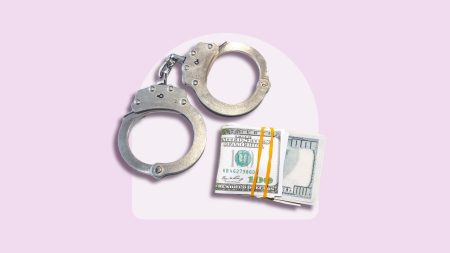whyframestudio/Getty Images
Your business just received a large, unexpected purchase for your products that could lead to a huge boost in revenue as well as your business’s reputation. Problem: you don’t have enough product on hand, and you won’t receive payment until the order is filled. That’s where purchase order financing comes in.
Purchase order financing helps businesses fill large orders even when they don’t have enough cash to buy supplies. And unlike a conventional business loan, you won’t have to pay the financing company until your customer settles the invoice.
Key takeaways
- Purchase order financing advances funds your business needs to fulfill a buyer’s order.
- The financing company is heavily involved in interacting with your suppliers and buyers.
- This type of financing is easier to qualify for since it relies on the customer’s and supplier’s credit.
- Other business loans provide more flexibility in how you use the funds.
What is purchase order financing?
Purchase order financing is a type of cash advance used when a business doesn’t have the capital to fulfill a customer order. Rather than turn down the order, the business can use purchase order financing to pay suppliers and ship the order. It then invoices the customer, and the customer pays the financing company directly.
Who uses purchase order financing?
Any business in which a customer orders goods by filling out a purchase order can use purchase order financing. Businesses need this alternative type of financing when they must buy materials from a supplier to fill the order, but they don’t have the cash to pay the supplier. This typically happens with business-to-business models, like wholesale companies or distributors.
How does purchase order financing work?
Purchase order financing involves multiple parties working together to fulfill the customer’s purchase. The process for getting this type of financing includes:
- The buyer requests a large order. A creditworthy buyer fills out a purchase order requesting a set number of products from your business.
- The business determines costs from suppliers. You check with suppliers on the cost of goods. You realize that your business doesn’t have the cash available to buy materials.
- The business requests purchase order financing. You present the purchase order and estimate of supply costs to a financing company.
- The financing company sends capital to suppliers. The financing company approves the financing based on the creditworthiness of the buyer. It then pays the suppliers.
- The customer pays the invoice. You receive the supplies and ship goods to the customer. You then send the invoice to the customer.
- The financing company takes out fees and sends you the rest. The customer pays the financing company directly. The financing company takes out any fees and sends your business the remaining profit.
Pros and cons of purchase order financing
Here are the main advantages and disadvantages of using purchase order financing:
Pros
- Keeps business flowing. You don’t have to turn down a large order, potentially hurting a relationship that would lead to future sales.
- Easier to qualify for. This financing is easier for businesses with bad credit to qualify for because the lender weighs your customer’s credit more than your business’s.
- No upfront payment. You don’t pay the financing company until the customer pays the invoice.
Cons
- Potentially high fees. Fees can cost anywhere from 2 percent to 6 percent of the financed amount per month, increasing the longer it takes the customer to pay.
- Involves the customer. The financing company interacts with the customer and supplier, bringing in a third party to these important relationships. This could lead to a lower customer experience and the perception that your business is having cash flow problems.
- Limited use of funds. Your business must sell physical products, and you can only use the funds to buy supplies. You’d need other types of business loans to cover equipment, operating expenses or other costs.
- Funding speed. The first time you use this type of financing, it could take several weeks to receive funding. Check with the financing company to understand its timeline.
- The lender may require minimum sales. Financing companies often look at the transaction volume or amount of sales before agreeing to finance.
How to qualify for purchase order financing
To get approved for purchase order financing, your business and the other parties involved must meet specific qualifications. Those include:
- Minimum sale requirements. Financing companies often set minimums that the sale must reach before they will consider financing. These may include a minimum sale amount like $100,000 and profit margins of 20 percent to 30 percent.
- Expected invoice due date. Financing companies want timely repayment, so they may work with invoices that have net-30 to net-90 due dates.
- Customer credit.The financing company may check your customer’s credit history and consider their recent timeliness on payments. It will also check your business credit history for a financial overview, though it’s not vital for financing approval.
- Reputable supplier. The reputation of the supplier also factors into the funding approval since the entire order hinges on the supplier’s ability to deliver materials in a reasonable time frame.
Bankrate insight
Conventional business loans rely heavily on your business cash flow and credit to approve the loan and set interest rates. But purchase order financing focuses more on the creditworthiness of your buyer and supplier.
Where to get purchase order financing
Purchase order financing is available mainly through online or direct lenders. Southstar Capital is an example of an online lender that offers purchase order financing up to 100% of the order. SMB Compass also offers purchase order financing on amounts from $25,000 to $10 million.
How to get more competitive purchase order loans
Lenders that offer purchase order loans will review several details when assessing how much to charge. These are some of the ways you can end up with a more competitive purchase order loan:
- Build credit: A higher credit score will help you get a lower rate and a higher loan amount from any lender. Purchase order financing companies will check your business credit score before giving you additional capital.
- Boost your order volume: Demonstrating a high order volume will make lenders more eager to work with you. Growing your business so big orders become more common will help you get a better rate.
- Highlight the reliability of your customers: Lenders want to know that a customer will follow through and commit to the order. Explaining the customer’s reliability and financial strength can lead to a more favorable loan.
- Reach out to multiple lenders: The first lender you contact may not have the best rates. Comparing multiple options makes it easier to find a suitable purchase order loan for your business.
Alternatives to purchase order financing
Purchase order financing may not provide the low rates or flexibility that you need to use the funds as you see fit. Fortunately, you can finance supplier expenses through other business loans, including:
- Invoice factoring or financing. With invoice factoring, you sell outstanding invoices to a factoring company that then collects the invoices from customers. Invoice financing advances cash based on unpaid invoices, allowing you to repay the amount once your invoices are paid.
- Merchant cash advance. This type of financing advances funds against future sales. You typically pay a percentage of sales each day until the advance is repaid.
- Business line of credit. A business line of credit establishes a borrowing limit that you can draw from at any time. The repayment term begins once you draw funds, and your credit limit refreshes as you repay the loan. You can use the loan for any expenses that you deem necessary.
- Business credit cards. A business credit card is a solid alternative to a business loan, especially for small or one-off purchases. You can charge supplier expenses and make the minimum payment until you can pay off the purchase from revenue. But business cards come with lower borrowing amounts like $50,000 compared to business loans, which may reach upwards of $250,000 or $500,000.
- Term loans. Business term loans provide a lump-sum payment in exchange for a fixed repayment term and schedule, such as monthly repayments. To fund a purchase order, you could choose a short-term loan for quick financing and short repayment terms.
Bottom line
Purchase order financing can help you bridge gaps in cash flow between receiving purchase orders and getting payment from the customer. It doesn’t rely as heavily on your credit history, making it an easier type of financing to qualify for.
But you need to meet other requirements such as a minimum sale amount in order for the financing company to consider you. You also don’t have to finance supplier expenses this way. Other business loans provide funding with lower interest rates if you can qualify for a conventional loan.
Frequently asked questions
-
The main risk of purchase order financing is that it could lower the customer’s and supplier’s experience with your business since they interact directly with the financing company. This type of financing also comes with high monthly fees, ranging from 2 percent to 6 percent. You also want to read the financing agreement to understand the process if the customer doesn’t pay the invoice.
-
The main difference is that invoice financing is a cash advance on unpaid invoices for goods already delivered or services already performed. Purchase order financing is an advance on products that have not yet been delivered to the customer.
-
Only businesses that rely on finished goods from suppliers can use purchase order financing. These may include:
- Construction companies
- Distributors
- Drop shippers
- Retailers
- Seasonal businesses
- Manufacturers
Read the full article here












